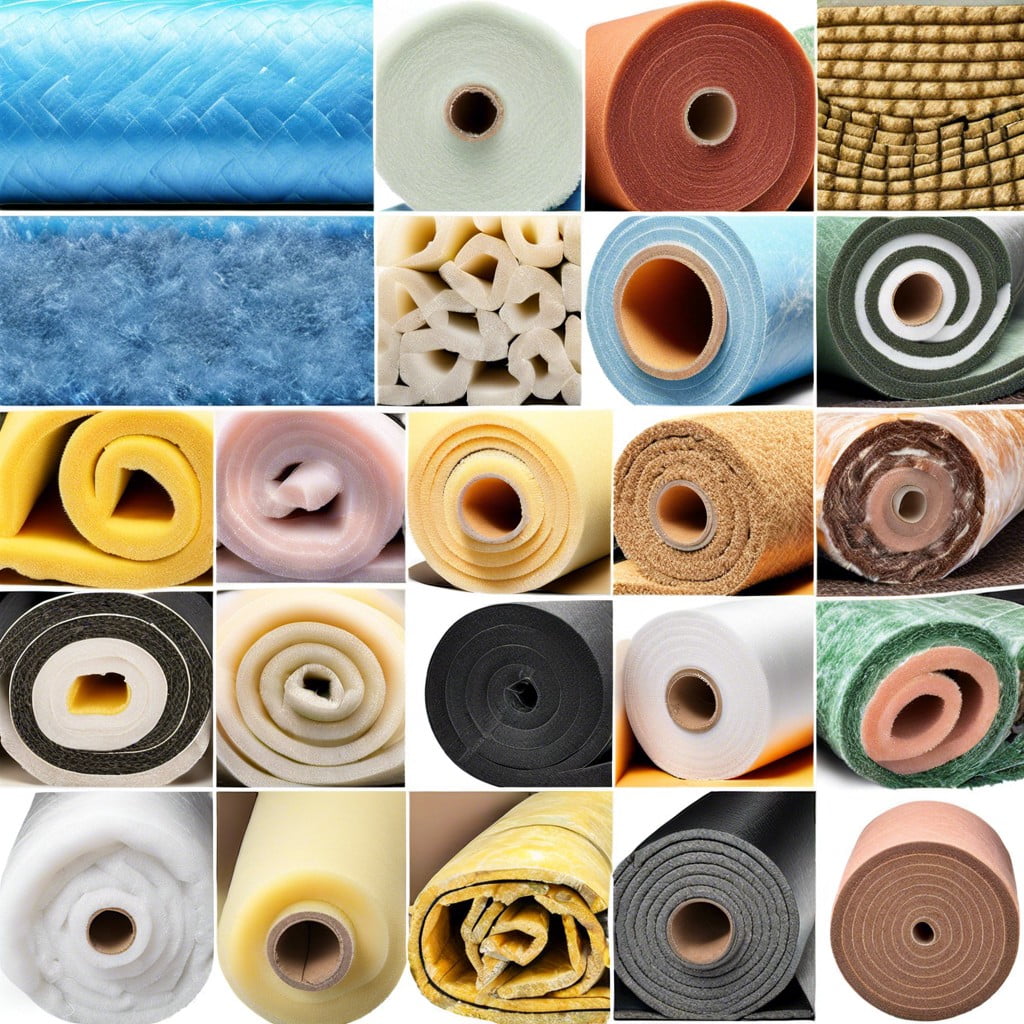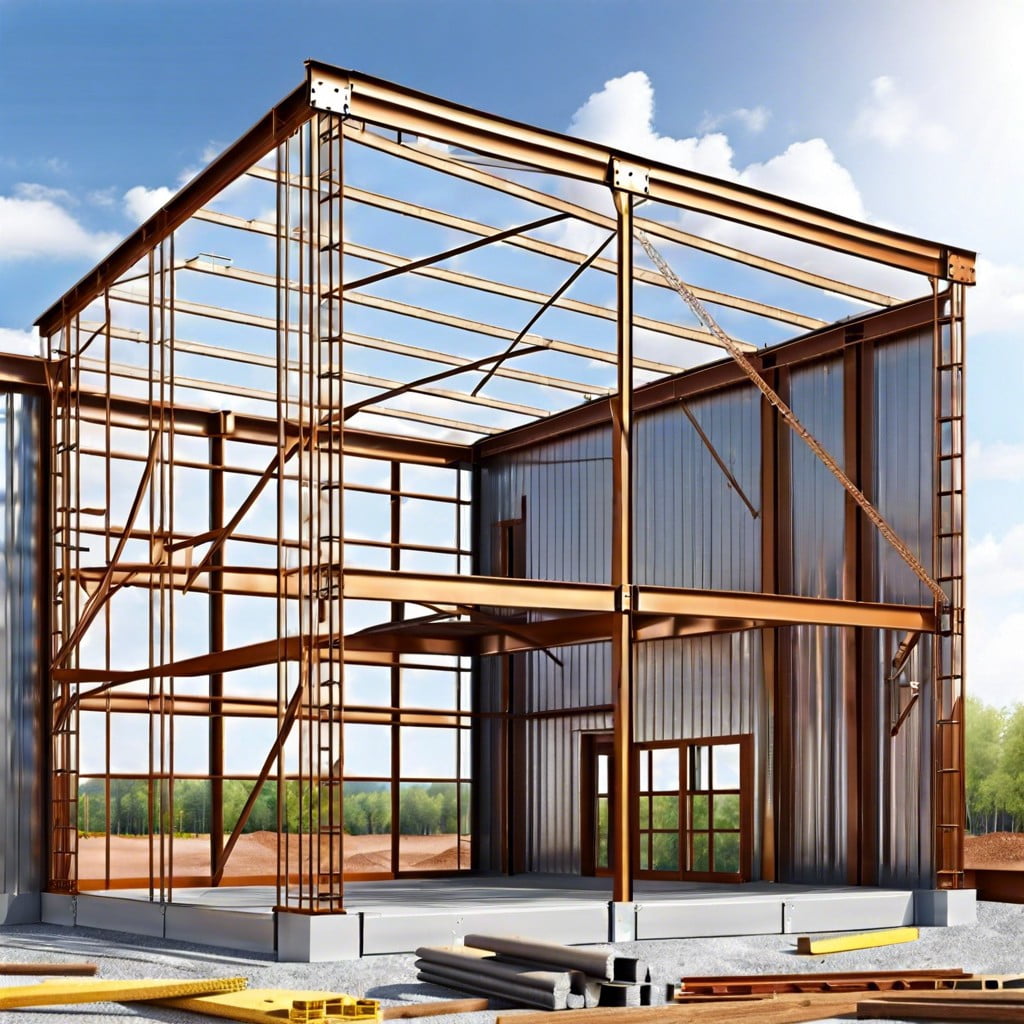Insulating a metal building ceiling is critical for energy efficiency because it regulates temperature, reduces noise, and controls moisture, enhancing the structure’s overall comfort and durability.
Insulating a metal building’s ceiling is a crucial step in ensuring energy efficiency and comfort. This process involves selecting the right insulation material, measuring the area to be insulated, properly installing the insulation, and finally, sealing the insulation to prevent air leaks.
This article will guide you through these steps in detail, ensuring you understand the process and can effectively insulate your metal building’s ceiling. So, whether you’re a seasoned pro or a DIY enthusiast, this comprehensive guide has all the information you need to get the job done right.
Key takeaways:
- Insulating a metal building’s ceiling is crucial for energy efficiency.
- Insulation regulates temperature, reduces noise, and controls moisture.
- Insulation enhances thermal and acoustic comfort and increases energy efficiency.
- Different types of insulation can be used, including fiberglass and spray foam.
- Proper installation and maintenance are essential for maximizing insulation effectiveness.
Importance of Insulating a Metal Building
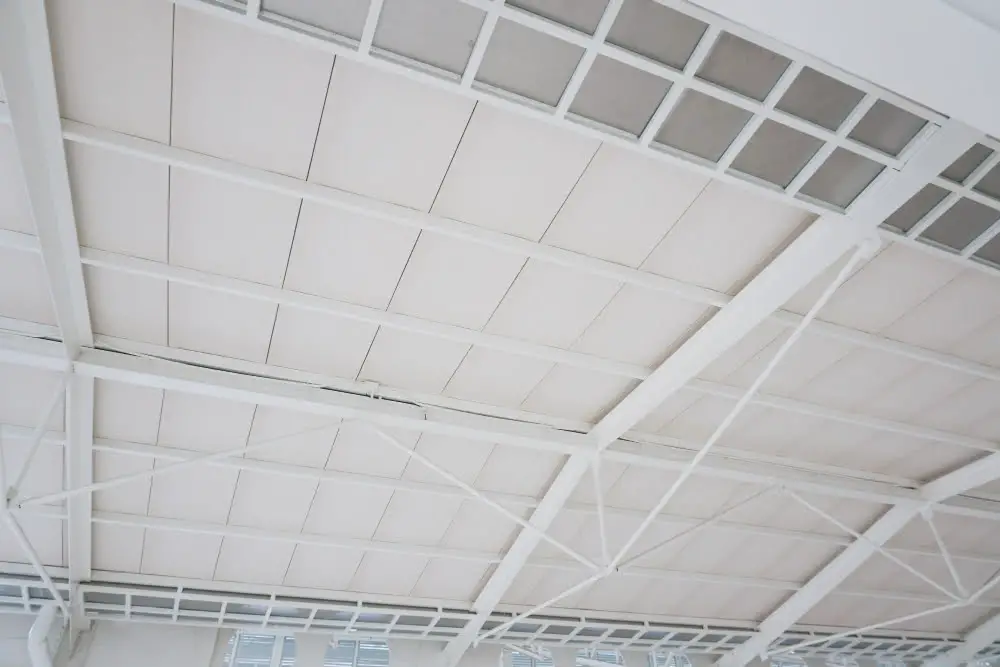
Insulating a metal building aids in maintaining thermal comfort across different seasons. In the summer, it reduces heat gain, keeping the interior cool, while in winter, it minimizes heat loss, ensuring a warm indoor environment.
Such thermal stability leads to reduced energy consumption, resulting in significant savings in power usage costs. Moreover, insulation significantly boosts the overall energy efficiency of the building.
Besides thermal comfort, insulation helps to control condensation, a critical consideration in metal buildings. This helps to protect the building structure from potential consequences of moisture accumulation such as rusting, corrosion, mildew, and mold, thereby preserving its lifespan.
Insulation can also enhance acoustics. More specifically, certain types of insulation can absorb sound, reducing noise and reverberation, contributing to a less noisy, more comfortable indoor environment.
In essence, insulation enhances both thermal and acoustic comfort, increases energy efficiency, and contributes to the longevity of metal buildings by preventing moisture-related deterioration.
Benefits of Stabilizing the Building’s Temperature With Insulation

Stabilized temperatures within any metal building yield a variety of unexpectedly significant rewards. The most pressing being energy conservation, where insulation aids in retaining cool air during hot seasons and preserving desired warmth during the colder ones. This ultimately lessens reliance on artificially controlled environments, potentially saving considerable energy costs.
Additionally, temperature-stabilized buildings contribute to enhanced comfort levels for occupants, particularly if the structure functions as a workspace or home. Comfortable warehouses mean productive individuals, while well-insulated homes mean content inhabitants.
On top of all this, materials inside the building, susceptible to temperature variations, are preserved better, extending their lifespan, durability, and efficiency. This could range from machinery at an industrial facility to simply the food items in your pantry.
Finally, a well-insulated space addresses environmental concerns as it reduces overall energy consumption and carbon footprint, promoting sustainability and conservation.
Preventing Moisture, Mold, Mildew, Rust, and Corrosion With Proper Insulation
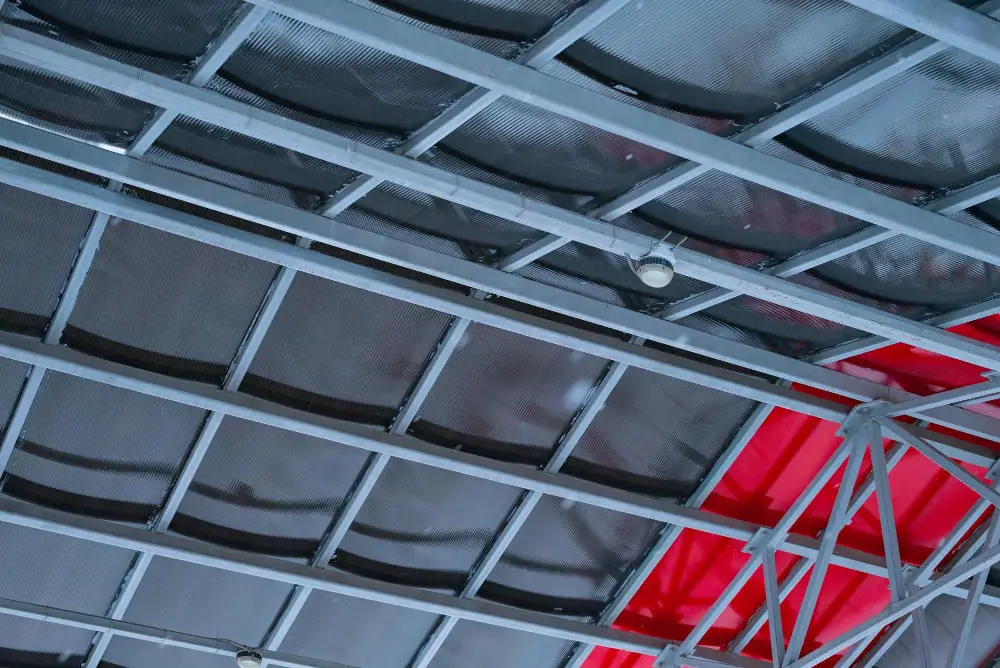
Ensuring proper insulation goes beyond temperature control. It plays a crucial role in maintaining the integrity of a metal building by deterring moisture accumulation which can lead to detrimental issues such as mold, mildew, rust, and corrosion.
To understand this, note:
- Insulation acts as a barrier, preventing warm air from meeting cool surfaces on the interior building envelope, eliminating condensation risks.
- Utilizing insulation with an effective vapor retarder can thwart moisture from infiltrating the building’s interior, thus preventing conditions favorable to mold and mildew.
- When insulation inhibits condensation, it also reduces the chance of rust and corrosion, prolonging the life of the metal structure.
- The right insulation can create a drier environment within a building, increasing indoor air quality and reducing potential health risks.
Remember, the type of insulation used and its correct installation is paramount in enhancing moisture control properties. Perfectly done, all these benefits accrue, resulting in healthier, longer-lasting metal buildings.
How Sound Absorption Can Be Enhanced With Insulation
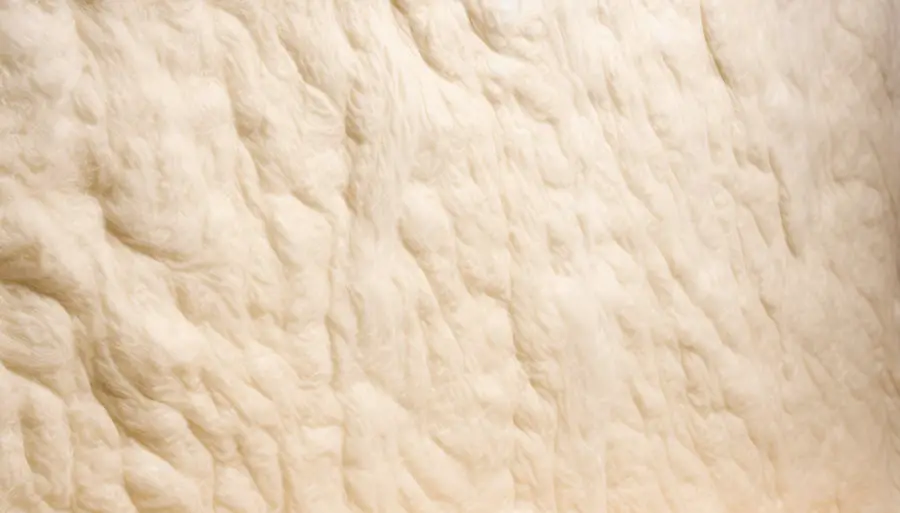
To enhance sound absorption within a metal building, insulating the ceiling presents an effective solution. Insulation not only impedes heat transfer but also reduces noise transmission. Here are the principles behind this process:
1. Use of Fiberglass Insulation: Fiberglass insulation is known for excellent sound absorption qualities. Acting as a buffer, it absorbs sound waves, reducing their ability to reverberate around the metal structure.
2. Higher Insulation R-Values: An insulation’s R-value indicates its thermal resistance. Interestingly, higher R-values also contribute to improved sound deadening. So, selecting insulation with a high R-value can double as a soundproofing tactic.
3. Insulation Thickness and Density: Typically, the thicker and denser the insulation, the better it is at absorbing sound. Sound waves lose energy when they hit a dense material, muffling unwanted noise.
4. Use of Spray Foam Insulation: Spray foam expands, filling gaps and cracks. This tight seal not only enhances thermal regulation but also aids in blocking airborne noise.
Remember, the optimal solution may differ depending on the specific requirements and budget of each project. Consideration of potential noise sources and desired acoustic comfort levels are paramount in decision making.
Understanding Fiberglass Solutions for Metal Building Ceiling Insulation
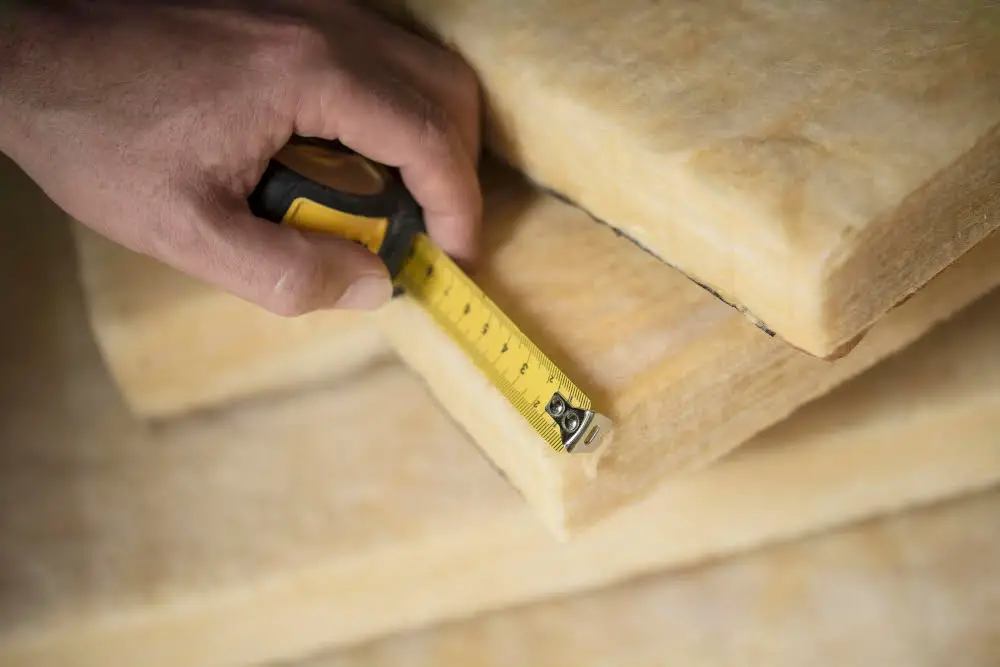
When considering fiberglass solutions, two types prove to be popular choices; batts and blankets. Both options come in varying thickness, catering to different U-values and R-values. Batts are smaller, easier to handle individually, fitting in between studs, joists and rafters. Their flexible nature ensures the insulation hugs the right places, leaving minimal gaps.
Blankets, on the other hand, come in continuous rolls, ideal for large coverage areas. The rolls can be cut to a suitable length, fitting into a plethora of building design layouts. They prove cost-effective and efficient for large-scale construction projects.
Both types often feature a vapor retarder on one side. The retarder faces the building’s interior, minimizing risk of moisture penetration, an essential step in building longevity.
Moreover, fiberglass insulation offers high fire resistance. It is non-combustible, does not carry flames, melting at high temperatures instead. Consequently, it adds a layer of safety in the event of a fire — an invaluable attribute.
Lastly, consider ease of installation. Fiberglass solutions are lightweight, requiring minimal labor to install. Standard equipment like staple guns, utility knives and gloves suffice, thereby reducing overhead costs. Still, professional installation ensures a snug fit, optimized insulation performance, and longevity of the material. Be sure to weigh the convenience against potential opportunity for error when deciding on self-installation.
Exploring Spray Foam Insulation for Metal Building Ceilings
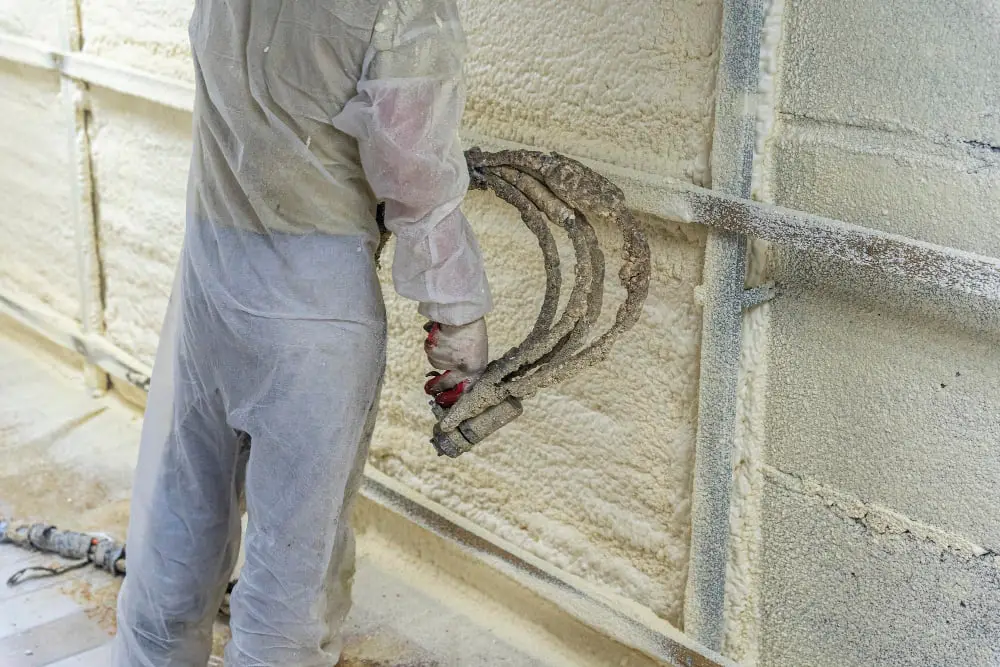
Commonly considered a premium option, spray foam insulation boasts remarkable benefits. Primarily, it forms a close-fitting barrier around and within each cavity, thus minimizing unwanted air infiltration. Due to this airtight seal, spray foam distinctly improves energy efficiency by limiting heat loss.
This type of insulation comes in two formats: open-cell or closed-cell. Open-cell insulation, the less expensive choice, provides excellent sound absorption but comparatively lower insulating value. Closed-cell insulation, though more costly, boasts higher R-values, making it better for temperature control. Closed-cell variants are also more resistant to moisture, a critical factor in metal building ceilings.
A further benefit of this insulation type extends beyond thermal comfort and noise reduction: durability. Spray foam adheres well to the metal, filling all gaps and cracks, and doesn’t sag over time. However, a notable downside of this insulation is the requirement for professional installation due to its complexity and safety considerations. Therefore, while superior in performance, spray foam might not always be the first insulation choice due to its higher initial outlay.
Examining Types of Metal Building Ceiling Insulation
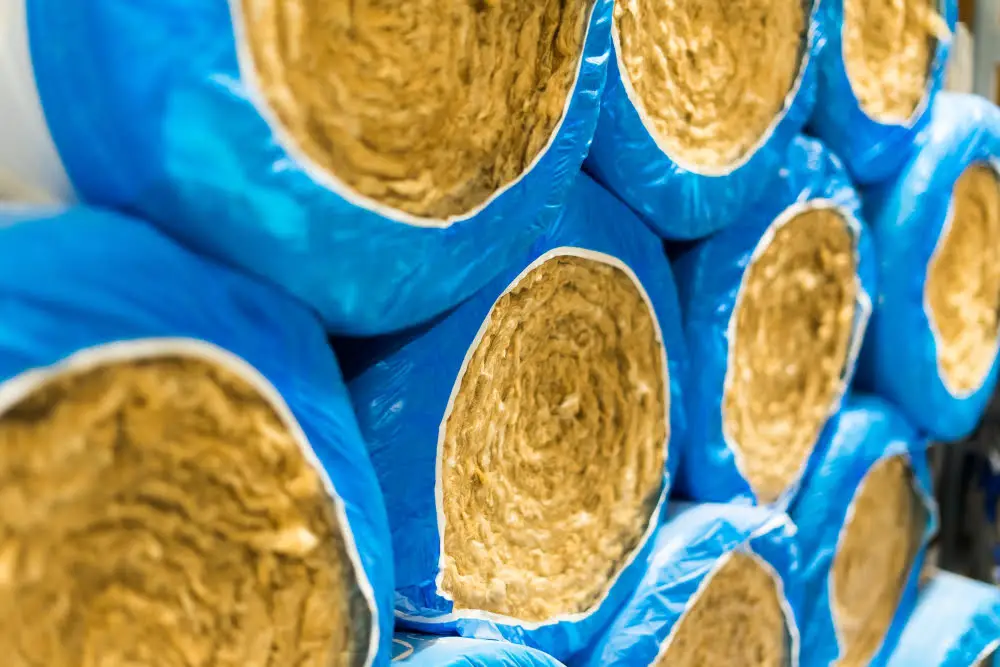
Various insulation options are available, each with specific features fitting different construction scenarios.
1. Single Layer Faced Fiberglass Blanket Insulation: This product is economical and commonly used in roofs and walls. Its key advantage is a quicker installation process, with it being directly rolled onto the purlins and girts.
2. The Sag and Bag Two-Layer System: By placing one layer over the purlins and a second layer between, this option significantly boosts insulation performance. Added labor and material costs are offset by long-term energy savings.
3. The Long Tab and Banded Two Layer System: This method involves a lower layer suspended from the purlins and an upper layer set right over the purlins. It offers superior insulation while keeping the aesthetics of exposed beams intact.
Take note that proper installation of these insulation types is critical to maintain the integrity of your metal building and to achieve the maximum energy savings possible.
Using Single Layer Faced Fiberglass Blanket Insulation
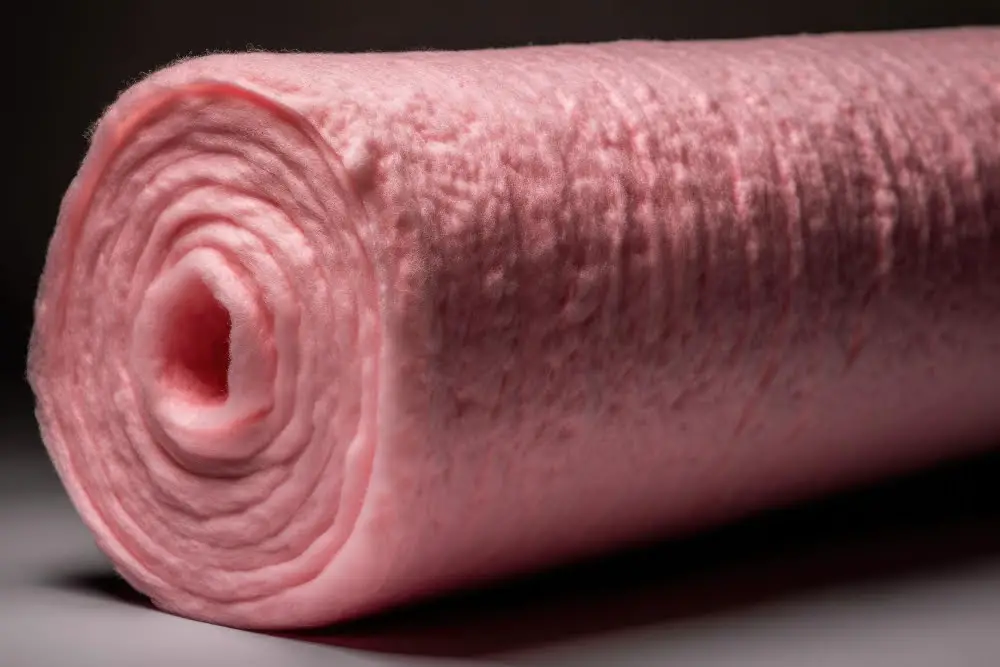
Fiberglass blanket insulation embodies a popular and effective choice for metal buildings. It’s lightweight and relatively easy to install, often needing only a standard construction stapler. The material is comprised of fine strands of glass fibers, compressed and layered to create a ‘blanket’ that traps air, forming a thermal shield.
Why this insulation delivers:
- Effective Resistance: It offers good resistance to heat flow, typically rated with an R-value (a measure of thermal resistance) between R-3 to R-4 per inch.
- Combatting Moisture: The facing acts as a vapor retarder, protecting the metal building from dampness and related issues like mold, mildew and condensation.
- Soundproofing Benefit: Apart from thermal advantages, fiberglass insulation also serves as a sound barrier, reducing noise transmission.
- Affordability: Overlaying cost-effectiveness with proficiency, this single layer insulation falls on the more affordable end of the spectrum.
- Eco-Friendliness: Made from 20-30% recycled glass content, it’s an option that considers environmental impact.
Remember, while the installation process is straightforward, safety precautions should be undertaken. Always wear protective gear while working with fiberglass insulation to prevent skin irritations and respiratory issues.
Working With the Sag and Bag Two-Layer System
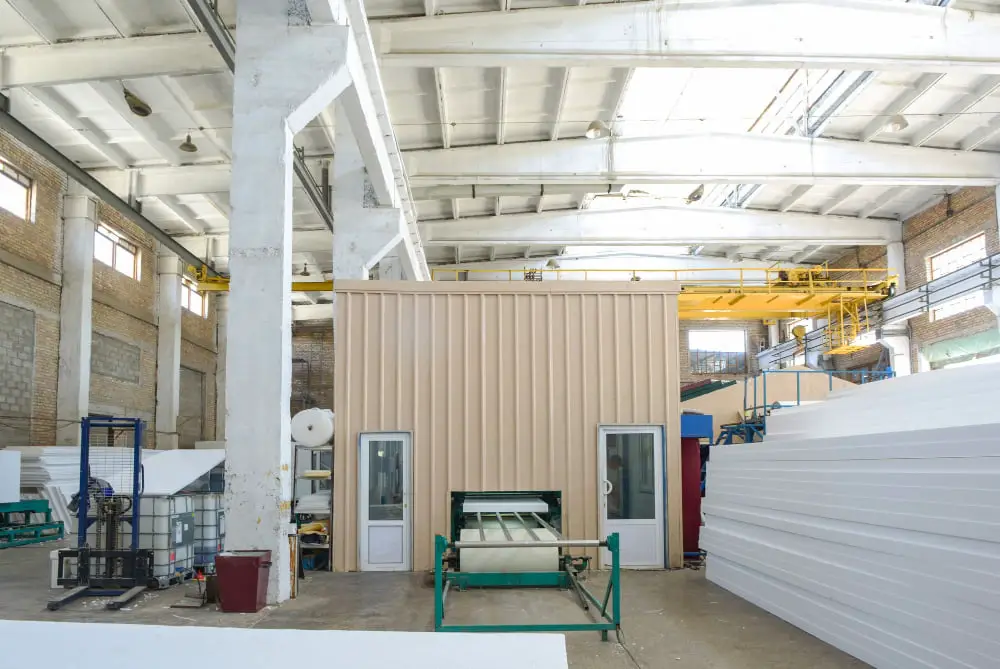
Opting for the Sag and Bag system requires an initial draped layer of insulation, which is anchored to the roof purlins. Then, a second layer of insulation is attached to the roof panels, filling the void created by the first layer. This system maximizes the overall insulation value while providing a uniform and attractive appearance when viewed from below.
Main advantages of this method include:
- Enhanced Insulation Value: Two layers of insulation means more effective thermal control, which in turn, results in energy savings.
- Dealing with Overspray: As the system doesn’t rely on adhesives or spray-on insulation, overspray is not an issue.
- Moisture Control: The two different layers work together to prevent condensation, reducing the risk of mold and mildew.
- Aesthetic Appeal: The finish is smooth and uniform, adding to the overall visual appeal of the metal building.
- Speed of Installation: While it does require a little more work than some methods, the sag and bag system is relatively quick and straightforward to install.
As always, it’s crucial to ensure that the system is installed correctly for optimum effect.
Integrating the Long Tab and Banded Two Layer System
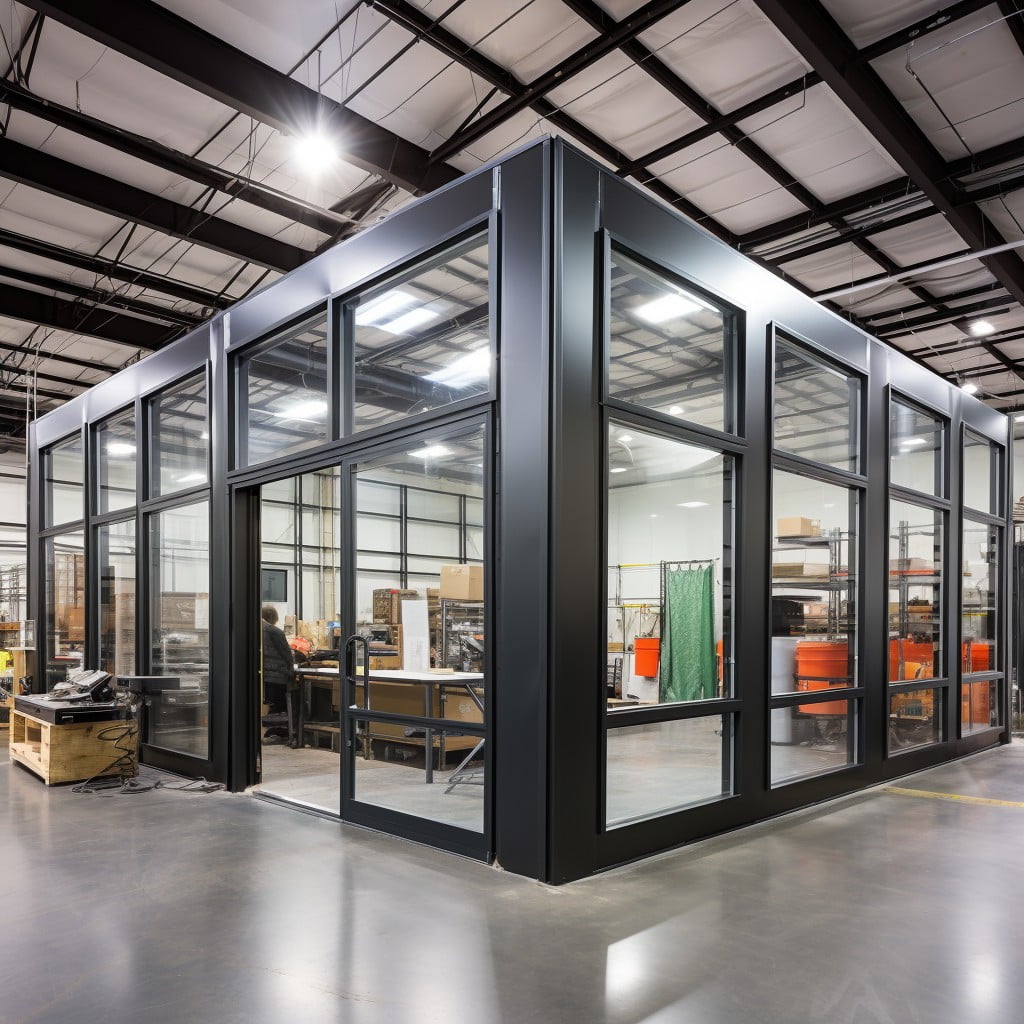
With the long tab and banded system, the insulation is installed between the purlins and over the top, “blanketing” the whole roof area. Though the initial material cost is slightly higher compared to single-layer insulation, it offers significantly more energy efficiency.
Here are the key steps to consider:
- Start by draping the first layer of insulation perpendicular to the purlins, leaving the tab facing the ground, aligned with the end of the purlin.
- The second layer is then installed parallel to the purlins, laid out atop the bottom layer, creating a ‘banded’ look.
- Banding material secures the two layers at the purlin and ensures a tight, firm fit.
- Seal the seams using quality insulation tape, not only does this enhance the insulation performance, but it also provides a clean finish.
- It’s advisable to have trained professionals handle this installation as it requires a certain level of precision and skill to avoid gaps or crinkles, maximizing the system’s effectiveness.
By following these steps, this two-layer system serves as a high-performing thermal barrier, efficiently managing the heat load of the metal building, while also enhancing sound absorption.
Reflective Insulation: A Different Approach
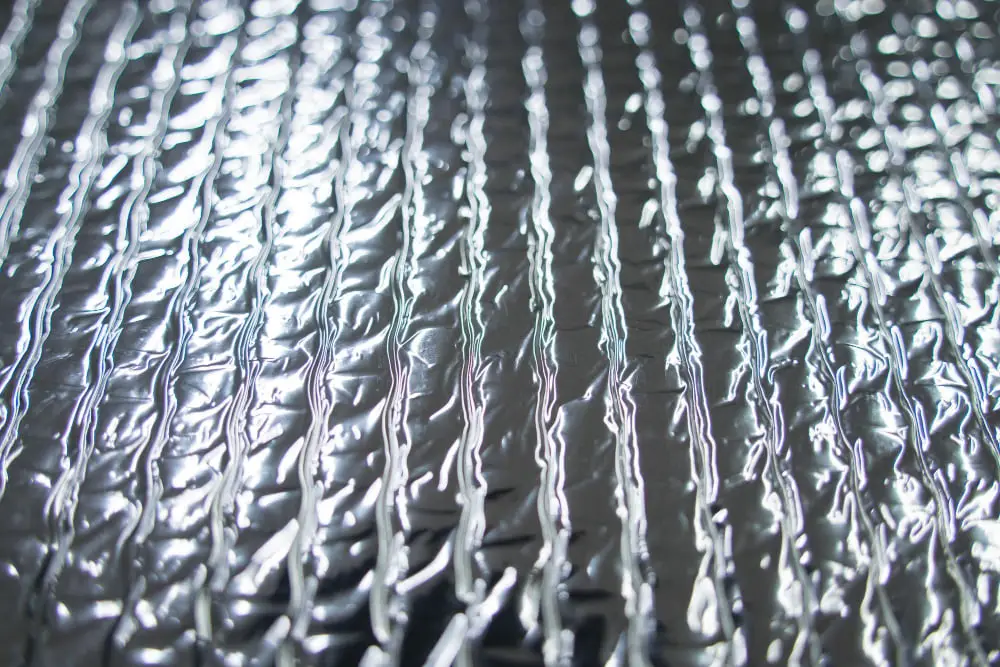
Reflective insulation, typically composed of reflective aluminum foil adhered to one or both sides of a substrate material, operates under a unique mechanism. Rather than reducing heat flow via resistance like traditional insulators, it curbs the amount of radiant heat reaching the interior of your metal building by bouncing it back to its source.
For supreme performance, reflective insulation demands an air space adjacent to the reflective surface. It essentially works by leveraging three heat-transfer fundamentals, namely conduction, convection, and radiation. Notably, the radiant heat it deters forms a major part of the heat gain during summer and heat loss during winter in metal buildings, making it a potentially impactful insulator.
Reflective insulation requires careful installation to achieve optimal benefits. Care must be taken to maintain the air gap, and consideration should also be given to the reflective insulation’s position in relation to radiant barriers, vapor barriers, and other building materials. The material is versatile, offering an array of installation choices such as stapling, taping, or just laying it on top of previous insulation in retrofit applications.
Versatility, reduced heat gain or loss, and ease of installation are key merits of this unique insulation option. It’s an especially worth-considering choice if your metal building is situated in an area with high radiant heat levels.
Utilizing Rigid Board Insulation for Metal Ceilings

Rigid board insulation is a popular choice for metal buildings, especially when high R-value (thermal resistance) is a priority. This type of insulation material provides impressive dimensional stability and excellent compressive strength.
There are three main types of rigid board insulation: polyisocyanurate, extruded polystyrene (XPS), and expanded polystyrene (EPS). Each has its unique characteristics.
- Polyisocyanurate, also known as polyiso, is renowned for providing the highest R-value per inch. It is also resistant to fire and features a foil face that enhances its insulation properties.
- Extruded polystyrene (XPS) features a continuous skin surface and a closed-cell structure. This makes it highly resistant to water absorption, a feature beneficial for preventing the corrosion of metal ceilings.
- Expanded polystyrene (EPS) is breathable, allowing water vapor to diffuse, avoiding the risk of moisture build-up. It delivers the most cost-effective R-value.
Installation of rigid insulation board is often a straightforward process but does require specific tools and skills. For metal ceilings, these panels can be cut to fit between rafters and secured with specialized adhesives, mechanical fasteners, or a combination of both. It’s always best to reference the manufacturer’s instructions for optimal insulation performance.
Remember to consider local building codes and fire safety regulations when choosing rigid board insulation for your metal building ceiling. It is crucial to incorporate a suitable thermal barrier between the interior of the building and the insulation material.
Understanding U-Values, R-Values and Vapor Retarders in Metal Ceiling Insulation
In the realm of insulation, U-Values and R-Values play integral roles. The R-Value is a measure of resistance to heat flow. A higher R-Value indicates a more effective insulator. Consequently, a material with a high R-Value is preferable for insulating a metal building ceiling, as it restricts heat transfer, stabilizing the internal temperature.
U-Values, on the other hand, denote a material’s ability to conduct heat. They signify the amount of heat lost in an hour per square meter of material for every degree difference in temperature between the inside and outside of the building. A lower U-Value is advantageous, implying less heat lost through the insulated surface.
Vapor retarders are as crucial even though their function is different. They are typically incorporated into insulation materials used in metal ceilings to control the flow of moisture-laden air. Effective vapor retarders can hinder condensation within the insulation, preserving its efficacy and the structural integrity of the metal building. They work best when installed on the warm side of the insulation, preventing moist indoor air from reaching the cooler metal surface.
Understanding these concepts is key to selecting the correct insulation for your metal building ceiling.
Effective Methods to Stop Condensation in a Metal Building
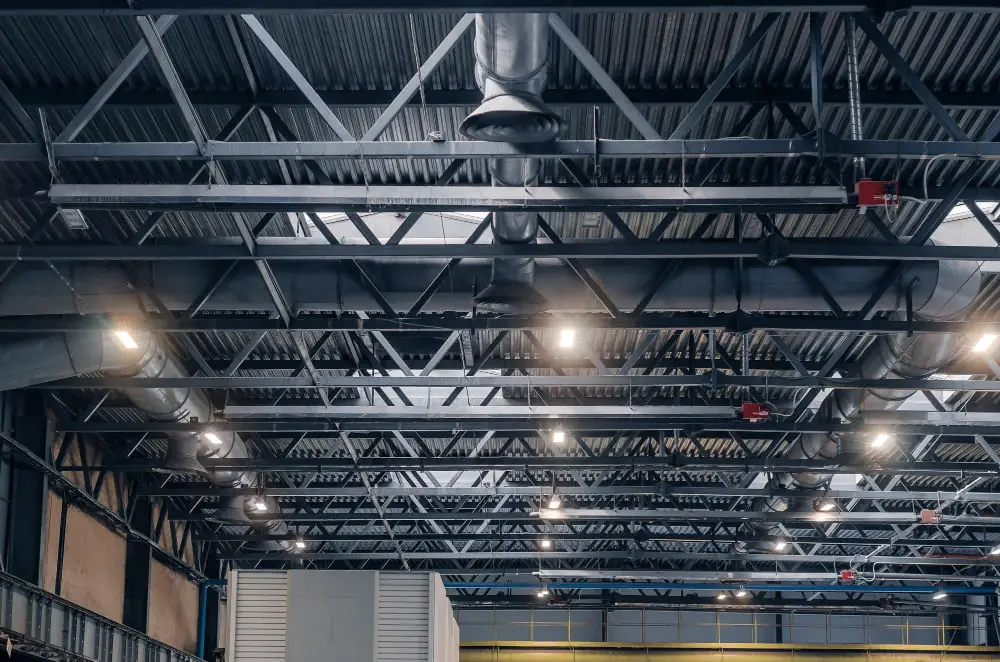
Appropriate insulation plays a significant role in minimizing condensation inside metal buildings. To do this effectively, consider the following methods:
1. Radiant Barrier Method: This involves installing a radiant barrier which reflects the radiant heat instead of absorbing it, mitigating condensation.
2. Dehumidification Technique: Utilizing dehumidifiers to maintain an optimal humidity level is beneficial for larger buildings, especially in damp climates.
3. Ventilation Systems: Properly designed ventilation can prevent the accumulation of moisture inside the building. This includes ridge vents, gable vents, and circular vents for adequate air circulation.
4. Install DripStop or Roof-Condensation Solution: These products are designed to absorb condensed water vapor and gradually release it back into the atmosphere thus, preventing dripping.
5. Use of Vapor Barrier: It serves as an extra layer of protection against moisture. It needs to be installed on the warmer side of the insulation to prevent the formation of condensation.
6. Heat the Interior: Another simple and effective method is to maintain a warm temperature inside the building, especially during colder months when exterior temperature is significantly lower.
Remember, the selection of the condensation prevention method is highly dependent upon the specific requirements of the building and the climatic conditions of the area. Consulting with a metal building insulation expert can help in choosing the right method tailored to your needs.
FAQ
What is the best ceiling insulation for metal building?
The best ceiling insulation for a metal building is fiberglass insulation.
What is the cheapest way to insulate an existing metal building?
The cheapest way to insulate an existing metal building is by using fiberglass batt insulation due to its wide availability, relatively low cost, and easy installation process.
What is the cheapest way to insulate a metal shed roof?
For cost-effectiveness in insulating a metal shed roof, utilizing fiberglass batts or rigid foam boards is typically the best approach considering they are relatively inexpensive and straightforward to install.
How does spray foam insulation compare to traditional insulation materials for metal buildings?
Spray foam insulation, with its superior R-value and ability to fill and seal crevices, provides higher energy efficiency and air-tight insulation than traditional materials such as fiberglass or mineral wool in metal buildings.
What are the steps involved in installing blanket insulation in a metal building?
The steps to install blanket insulation in a metal building include measuring the space, cutting the insulation material to fitting, applying the insulation material to the metal’s surface, using tapes or adhesives to secure it in place, and inspection for any gaps that need to be filled.
Can radiant barrier insulation be efficient for a metal shed roof?
Yes, radiant barrier insulation can be highly efficient for a metal shed roof as it reduces heat gain during summer and heat loss during winter.
Recap



